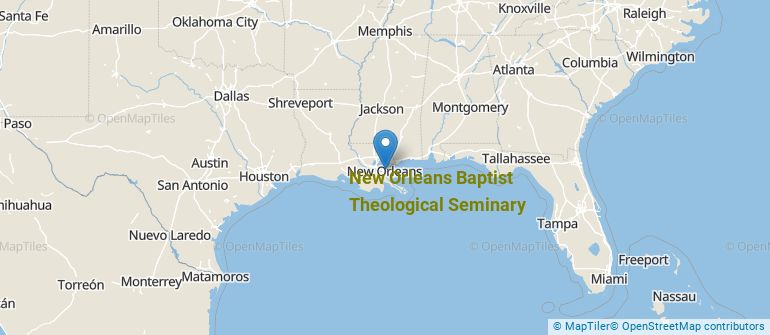 by our College Data Analytics Team
by our College Data Analytics TeamExplore the best ranked schools for the programs you are most interested in.
NOBTS was not ranked in College Factual's Best Overall Colleges report this year. This may be because not enough data was available.
See all of the rankings for New Orleans Baptist Theological Seminary.
If you are worried about getting into New Orleans Baptist Theological Seminary, don't be. The school has a liberal open admissions policy, which means you only need to meet basic requirements in order to be admitted. Still, be sure to submit a complete application and provide any other requested materials.
The student to faculty ratio at New Orleans Baptist Theological Seminary is about average at 14 to 1. This ratio is often used to gauge how many students might be in an average class and how much time professors will have to spend with their students on an individual level. The national average for this metric is 15 to 1.
In addition to the student to faculty ratio, some people look at what percentage of faculty members are full-time as a sign of how much time professors will be able to spend with their students. This is because part-time teachers may not be be on campus as much as their full-time counterparts.
The full-time faculty percentage at New Orleans Baptist Theological Seminary is 100%. This is higher than the national average of 47%.
The freshmen retention rate of 89% tells us that most first-year, full-time students like New Orleans Baptist Theological Seminary enough to come back for another year. This is a fair bit higher than the national average of 68%. That's certainly something to check off in the good column about the school.
The on-time graduation rate is the percent of first-time, full time students who obtain their bachelor's degree in four years or less. This rate is 5% for first-time, full-time students at NOBTS, which is lower than the national rate of 33.3%.
Find out more about the retention and graduation rates at New Orleans Baptist Theological Seminary.
During the 2017-2018 academic year, there were 839 undergraduates at NOBTS with 155 being full-time and 684 being part-time.
Almost 66% of college students who graduated with the class of 2018 took out student loans, but that percentage varies from school to school. At NOBTS, approximately 11% of students took out student loans averaging $5,000 a year. That adds up to $20,000 over four years for those students.
Get more details about paying for New Orleans Baptist Theological Seminary.
Get more details about the location of New Orleans Baptist Theological Seminary.

Contact details for NOBTS are given below.
| Contact Details | |
|---|---|
| Address: | 3939 Gentilly Blvd, New Orleans, LA 70126 |
| Phone: | 504-282-4455 |
| Website: | www.nobts.edu/ |
| Most Popular Majors | Bachelor’s Degrees | Average Salary of Graduates |
|---|---|---|
| Theological & Ministerial Studies | 147 | NA |
| Religious Studies | 101 | NA |
| Missionary Studies | 101 | NA |
| Religious Education | 41 | NA |
| General Psychology | 24 | NA |
| Pastoral Counseling & Specialized Ministries | 24 | NA |
| Biblical Studies | 20 | NA |
| Sacred Music | 10 | NA |
| Philosophy | 0 | NA |
| Theology & Religious Vocations (Other) | 0 | NA |
Online learning options are becoming more and more popular at American colleges and universities. Online classes are great for students who have busy schedules or for those who just want to study on their own time.
In 2022-2023, 1,221 students took at least one online class at New Orleans Baptist Theological Seminary. This is an increase from the 926 students who took online classes the previous year.
| Year | Took at Least One Online Class | Took All Classes Online |
|---|---|---|
| 2022-2023 | 1,221 | 582 |
| 2021-2022 | 926 | 495 |
| 2020-2021 | 869 | 312 |
| 2018-2019 | 837 | 497 |
Learn more about online learning at New Orleans Baptist Theological Seminary.
Footnotes
*The racial-ethnic minorities count is calculated by taking the total number of students and subtracting white students, international students, and students whose race/ethnicity was unknown. This number is then divided by the total number of students at the school to obtain the racial-ethnic minorities percentage.
References
More about our data sources and methodologies.